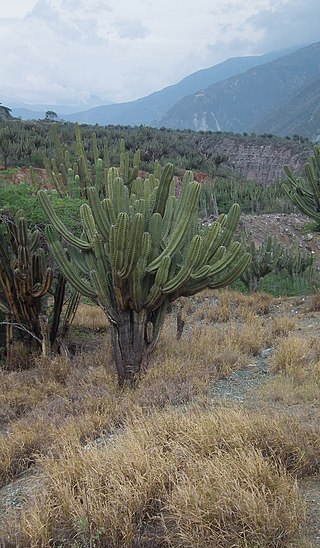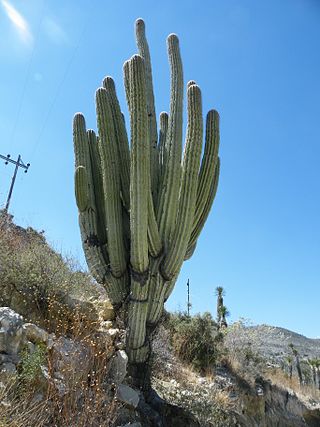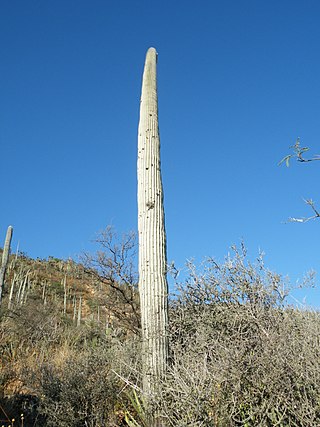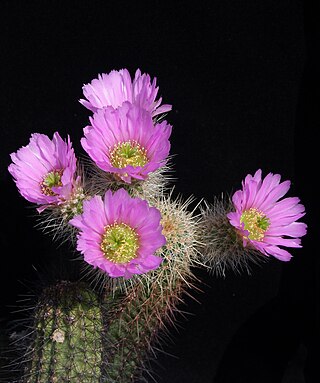
Espostoopsis is a monotypic genus of cactus containing the single species Espostoopsis dybowskii. The generic name is formed from Greek opsis meaning "view", referring to its resemblance to the genus Espostoa, with which it is often confused. The plant is only known from northern Bahia, Brazil.

Lophocereus marginatus is a species of plant in the family Cactaceae. It is sometimes called Mexican fencepost cactus.

Stenocereus stellatus is a flowering plant in the family Cactaceae that is found in Oaxaca, Mexico

Gymnocalycium amerhauseri is a species of Gymnocalycium from Argentina.

Cereus fricii is a species of Cereus from Venezuela.

Soehrensia formosa, is a species of Echinopsis found in South America. In north-western Argentina, Bolivia and northern Chile. First published in Cactac.: Handb. Kakteenk. 3: 1678 in 1959.

Lobivia ferox, is a species of Lobivia found in Bolivia and Argentina.

Soehrensia huascha, is a species of Soehrensia in the Cactaceae family, found in north western Argentina. First published in Cactaceae Syst. Init. 29: 5 in 2013.

Lobivia schieliana, is a species of Lobivia found in Bolivia and Peru.

Pachycereus weberi is a columnar cactus plant native to Mexico.

Leucostele deserticola is a species of cactus native to South America.

Cephalocereus fulviceps is a species of Cephalocereus from Mexico.

Cephalocereus macrocephalus, synonym Neobuxbaumia macrocephala, is a species of cactus endemic to Mexico.

Cephalocereus columna-trajani is a species of cactus from Mexico.

Cephalocereus euphorbioides is a species of Cephalocereus from Mexico.

Cephalocereus tetetzo is a species of cactus from Mexico.
Cephalocereus apicicephalium is a species of cactus from Mexico.

Cephalocereus scoparius is a species of Cephalocereus from Mexico.

Cephalocereus polylophus is a species of cactus endemic to Mexico. Often grown under the synonym Neobuxbaumia polylopha, it is popular with cactus growers and reproduces well in cultivation.

Echinocereus spinigemmatus is a species of cactus native to Mexico.






















